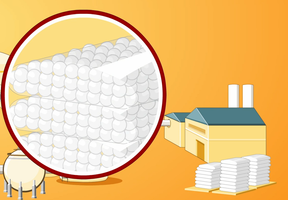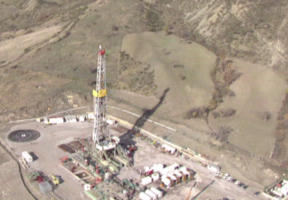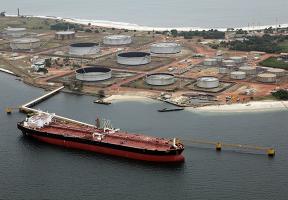The Three Stages of Refining
10 min read
needs to be processed before it can be used (See Close-Up: "Why Crude Oil Needs to be Refined"). Three major types of operation are performed to refine the oil into finished products: separation, conversion and .

© ROUSSEL MARC - TOTAL - A crude oil separator on one of the artificial islands on the Kashagan field in Kazakhstan.
Separation
In the first step, molecules are separated through atmospheric distillation (i.e. at normal atmospheric pressure), according to their molecular weight. During the process, which is also known as topping, the oil is heated at the bottom of a 60-meter distillation column at a temperature of 350 to 400°C, causing it to vaporize. The vapors rise inside the column while the heaviest molecules, or residuals, remain at the bottom, without vaporizing. As the vapors rise, the molecules condense into liquids at different temperatures in the column. Only gases reach the top, where the temperature has dropped to 150°C. The liquids, which are become increasingly light the higher they are found in the column, are collected on trays located at different heights of the column. Each tray collects a different fraction, also known as a petroleum cut, with highly viscous hydrocarbons like (bitumen) at the bottom and gases at the top.
The heavy residuals left over after atmospheric distillation still contain many products of medium density. The residuals are transferred to another column where they undergo a second distillation to recover middle distillates like heavy oil and .
Conversion
There are still many too heavy hydrocarbon molecules remaining after the separation process. To meet demand for lighter products, the heavy molecules are “cracked” into two or more lighter ones.
The conversion process, which is carried out at 500°C, is also known as catalytic cracking because it uses a substance called a catalyst to speed up the chemical reaction. This process converts 75% of the heavy products into gas, gasoline and diesel. The yield can be increased further by adding , a process called , or by using deep conversion to remove carbon.
The more complex the operation, the more it costs and the more energy it uses. The refining industry’s ongoing objective is to find a balance between yield and the cost of conversion.
Treating
Treating involves removing or significantly reducing molecules that are corrosive or cause air pollution, especially sulfur. European Union sulfur emission standards are very stringent. Since January 1, 2009, gasoline and diesel sold in Europe cannot contain more than 10 , or 10 milligrams per kilogram, of sulfur1. The purpose of these measures is to improve air quality and optimize the effectiveness of catalytic converters used to treat exhaust gas. For diesel, , or sulfur removal, is performed at 370°C, at a pressure of 60 bar. The hydrogen used in the process combines with the sulfur to form hydrogen sulfide (H2S), which is then treated to remove the sulfur, a substance used in industry.
Kerosene, butane and propane are washed in a caustic soda (sodium hydroxide) solution to remove thiols, also known as mercaptans. This process called sweetening.
Treating Automotive Fuels
Automotive fuels must also be treated to increase their octane rating, which is a measure of a fuel 's resistance to detonation, based on a scale of 0 to 100. (Engine knocking occurs when the fuel in an internal combustion engine ignites spontaneously with no input from the spark plug.) If the octane rating isn’t high enough, the engine will eventually be irreversibly damaged. To avoid this, it is necessary to boost the octane rating to 95 or 98.
The process used to produce high-octane products is called catalytic reforming. The chemical reactions during catalytic reforming, which uses platinum as a catalyst, occur at 500°C and a pressure of 10 bar. They convert some of the naphthenic hydrocarbons (saturated cyclic hydrocarbons) into aromatic hydrocarbons (unsaturated cyclic hydrocarbons), which have a much higher octane rating. Other chemical reactions, such as , also improve the octane rating.
Refined Petroleum Products and Their Uses
Each refined petroleum product obtained from crude oil has a specific use:
- , also known as butane and propane, is used as an automotive fuel or packaged in bottles and used for household purposes.
- Gasoline and diesel are used as fuels for motor vehicles.
- Kerosene is used as jet fuel.
- Naphtha is a major petrochemical feedstock.
- Heating oil is used to heat buildings.
- Base oils are used to make lubricants.
- Asphalt, sometimes called bitumen, is used to pave roads.
Source :



















